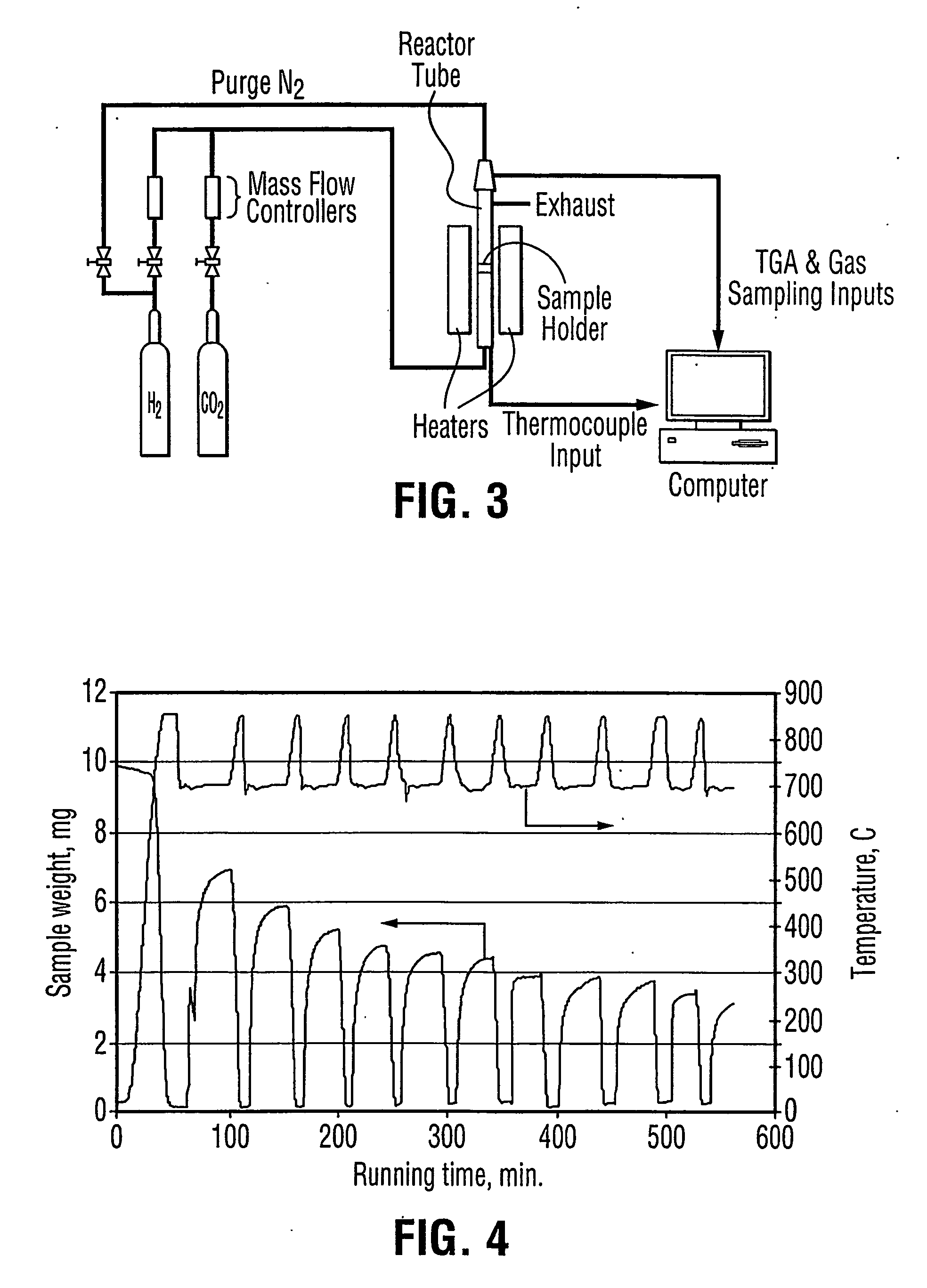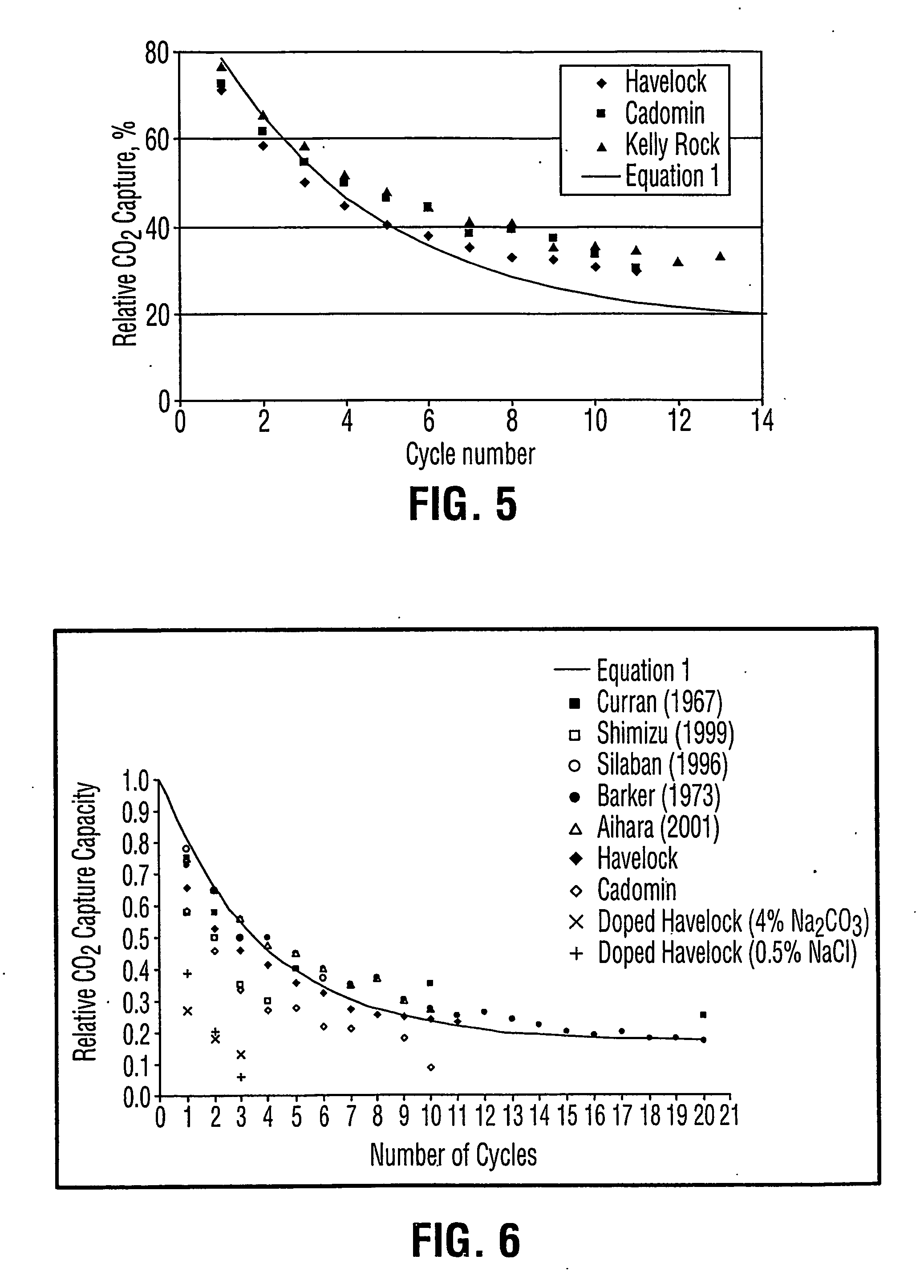Pre-treatment of lime-based sorbents using hydration
a technology of sorbents and sorbents, which is applied in the direction of adsorption, chemical separation, inorganic chemistry, etc., can solve the problems of significant amounts of unreacted calcium oxide in furnace ashes, low utilization rate of sorbents in the pbc system, and high heritability of the product, so as to improve the carbon dioxide or sulphur dioxide sorbent capacity of lime-based sorbents
- Summary
- Abstract
- Description
- Claims
- Application Information
AI Technical Summary
Benefits of technology
Problems solved by technology
Method used
Image
Examples
Embodiment Construction
[0062] A carbon dioxide hot gas scrubbing process according to this invention which produces a pure carbon dioxide stream is schematised in FIG. 1 and is denoted as 2. This scheme involves the use of a pressurized fluidized bed combustor / carbonator (PFBC / C) 4, where the fuel is burned in the presence of a sorbent which can, depending on operating conditions, remove up to 80% or more of the carbon dioxide and effectively all of the sulphur dioxide, and a calciner 6 where sorbent is regenerated by burning minor proportions of the fuel in oxygen. The pure carbon dioxide emitted is either used for some purpose or sequestered.
[0063] Such a process requires the sorbent to be recycled many times and deactivation of the sorbent will be a major problem. The large quantities of lime necessary for such a scheme mean that reactivation of the sorbent for carbon dioxide capture will be much more economically attractive than in the case of reactivation of lime for sulphur dioxide capture when com...
PUM
| Property | Measurement | Unit |
|---|---|---|
| temperature | aaaaa | aaaaa |
| temperature | aaaaa | aaaaa |
| height | aaaaa | aaaaa |
Abstract
Description
Claims
Application Information
 Login to View More
Login to View More - R&D
- Intellectual Property
- Life Sciences
- Materials
- Tech Scout
- Unparalleled Data Quality
- Higher Quality Content
- 60% Fewer Hallucinations
Browse by: Latest US Patents, China's latest patents, Technical Efficacy Thesaurus, Application Domain, Technology Topic, Popular Technical Reports.
© 2025 PatSnap. All rights reserved.Legal|Privacy policy|Modern Slavery Act Transparency Statement|Sitemap|About US| Contact US: help@patsnap.com



